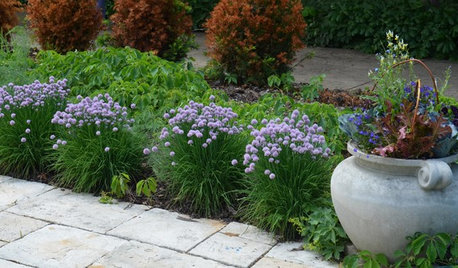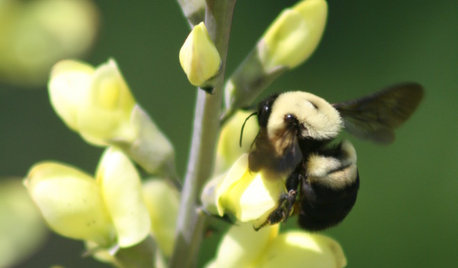tomato plants in compost?
sjean2007
16 years ago
Featured Answer
Sort by:Oldest
Comments (45)
steve2416
16 years agolast modified: 9 years agosqueeze
16 years agolast modified: 9 years agoRelated Discussions
does verticillium survive cold (warmish) composting?
Comments (6)The jury is out whether even hot composting destroys verticillium. Cold methods, including vermicomposting are definitely out. The fungi that cause the wilt disease are root invaders, and are known to persist is soils for many years. They are commonly spread by transport of infected plants or soils. The fungi will infect not only a number of common vegetable plants, but also many woody ornamentals including a number of familiar trees. Susceptible species are prone to be infected when stressed by other factors. As far as what to put in your compost - the general rule is material from any healthy plant. Personally, I don't compost anything I suspect of harboring any disease. edit added: "suspect of harboring any disease" means shows symptoms of being diseased. This post was edited by TXEB on Wed, Sep 4, 13 at 18:31...See MoreWeeping Wounds
Comments (1)Under normal conditions tomato plants are quite fast at healing themselves from cuts and breaks in stems. No sealing compound is normally used. Perhaps increasing the air circulation around the plants will help. Dave...See More"Wilds" that popped in your garden?
Comments (21)The problem I have had with volunteers is figuring out what they are, especially when they look a lot alike. I can't tell if the plant is summer or winter squash, melon, cuke, pumpkin, or watemelon. Or even gourds. I have to wait till they have fruit growing and even then it is a surprise. I have lots volunteer lettuce, cheery tomatoes (18 plants), sweet peppers, celery, potatoes, sunflowers and other flowers. The worse is fennel, you can't get rid of it. DH calls it, the plant from HE!!. It pops up everywhere....See Morefall clean up in compost
Comments (4)Bag and dispose of diseased plants. Most compost piles (especially in fall/winter) do not get hot enough to kill all disease microorganisms....See MoreKimmsr
16 years agolast modified: 9 years agokqcrna
16 years agolast modified: 9 years agomaupin
16 years agolast modified: 9 years agokqcrna
16 years agolast modified: 9 years agodorisl
16 years agolast modified: 9 years agokqcrna
16 years agolast modified: 9 years agoKimmsr
16 years agolast modified: 9 years agobean_counter_z4
16 years agolast modified: 9 years agoreginacw
16 years agolast modified: 9 years agoblutranes
16 years agolast modified: 9 years agoKimmsr
16 years agolast modified: 9 years agobean_counter_z4
16 years agolast modified: 9 years agokqcrna
16 years agolast modified: 9 years agodorisl
16 years agolast modified: 9 years agogumby_ct
16 years agolast modified: 9 years agoblutranes
16 years agolast modified: 9 years agosteve2416
16 years agolast modified: 9 years agobean_counter_z4
16 years agolast modified: 9 years agoblutranes
16 years agolast modified: 9 years agofarkee
16 years agolast modified: 9 years agoanitra
16 years agolast modified: 9 years agoshellva
16 years agolast modified: 9 years agogumby_ct
16 years agolast modified: 9 years agoshellva
16 years agolast modified: 9 years agojeannie7
16 years agolast modified: 9 years agogumby_ct
16 years agolast modified: 9 years agomaupin
16 years agolast modified: 9 years agobean_counter_z4
16 years agolast modified: 9 years agogbig2
16 years agolast modified: 9 years agobean_counter_z4
16 years agolast modified: 9 years agobryanccfshr
16 years agolast modified: 9 years agoblutranes
16 years agolast modified: 9 years agogumby_ct
16 years agolast modified: 9 years agomaupin
16 years agolast modified: 9 years agoblutranes
16 years agolast modified: 9 years agodarkcloud
16 years agolast modified: 9 years agokqcrna
16 years agolast modified: 9 years agodorisl
16 years agolast modified: 9 years agotom_n_6bzone
16 years agolast modified: 9 years agoKimmsr
16 years agolast modified: 9 years agotclynx
16 years agolast modified: 9 years agobelindach
16 years agolast modified: 9 years ago
Related Stories

EDIBLE GARDENSSummer Crops: How to Grow Tomatoes
Plant tomato seedlings in spring for one of the best tastes of summer, fresh from your backyard
Full Story
GARDENING GUIDESGet on a Composting Kick (Hello, Free Fertilizer!)
Quit shelling out for pricey substitutes that aren’t even as good. Here’s how to give your soil the best while lightening your trash load
Full Story
LIFEKitchen Traditions: Tomato Season Meets a Family Legacy
Somewhere a Sicilian great-great-grandmother is smiling at a bowl of American-made sauce
Full Story
ARCHITECTUREHouzz Tour: Fresh Ideas in a Former Tomato Packing Shed
A formerly metal-clad structure is now a beautiful wood home designed to capture the light and preserve open space
Full Story
GARDENING GUIDESHouzz TV: Make a Worm Bin for Rich Soil and Happy Plants
A worm-powered compost bin that can fit under a sink turns food scraps into a powerful amendment for your garden. Here’s how to make one
Full Story
EDIBLE GARDENSGarden BFFs? Why Your Vegetables Are Begging for Companion Plants
Foster friendships among plants for protection from pests, pollination support and color camaraderie
Full Story
FARM YOUR YARDHow to Build a Raised Bed for Your Veggies and Plants
Whether you’re farming your parking strip or beautifying your backyard, a planting box you make yourself can come in mighty handy
Full Story
GARDENING GUIDESGreat Garden Combo: 3 Wonderful Plants for a Deer-Resistant Screen
Protect your privacy and keep deer at bay with a planting trio that turns a problem garden area into a highlight
Full Story
GARDENING GUIDESEdible Plants That Double as Ornamentals
Try growing these tasty plants with your ornamentals for an attractive garden and fresher meals
Full Story
GARDENING GUIDESGreat Native Plant: Baptisia
Bring beneficial bee pollinators with this drought-tolerant perennial that looks like a shrub and acts like a flower
Full Story



jeannie7